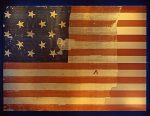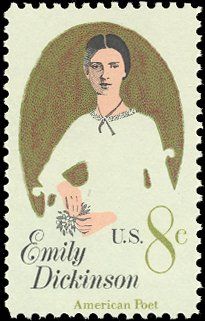Cold winds, right on schedule, have stripped many of the leaves from the trees in my neighborhood this week, carpeting the ground in color. That’s why our homeschool poem-of-the-week for the first week of November each year is Robert Frost’s motivational meditation “A Leaf-Treader”:
A Leaf-Treader
I have been treading on leaves all day until I am autumn-tired.
God knows all the color and form of leaves I have trodden on and mired.
Perhaps I have put forth too much strength and been too fierce from fear.
I have safely trodden underfoot the leaves of another year.All summer long they were overhead, more lifted up than I.
To come to their final place in earth they had to pass me by.
All summer long I thought I heard them threatening under their breath.
And when they came it seemed with a will to carry me with them to death.They spoke to the fugitive in my heart as if it were leaf to leaf.
They tapped at my eyelids and touched my lips with an invitation to grief.
But it was no reason I had to go because they had to go.
Now up, my knee, to keep on top of another year of snow.
When you introduce your students to a new poem, especially one in a traditional form, take your time, and don’t worry about “getting” everything right away. A good poem is a friend for life, and as with any friend, it takes several meetings to get acquainted.
![[A Leaf-Treader]](https://riverhouses.org/wp-content/uploads/2023/11/11-horace-leaves-trimmed-3-1024x641.jpg)
Before you even start to think about meaning, take a look at the poem’s structure. “A Leaf-Treader” is interesting because it doesn’t seem to have a regular meter, at least not as far as I can see. (Perhaps you can discover one.) Nevertheless, it has a number of distinctive structural features. First, it has relatively long lines, each in the 15–18 syllable range. (A poem in a conventional meter like iambic tetrameter or pentameter will have only eight or ten syllables per line.) Second, each line is a complete sentence. That’s quite unusual: in most English poetry the sentences regularly run over the line-ends, and sometimes continue on for several lines with grammatical pauses appearing internally within the lines. But when each line is a complete sentence, as here, it creates a very strong “stop” at the end of each line. Third, Frost uses a very heavy rhyme-scheme with exact rhymes that you can’t miss: tired–mired fear–year, and so on. I make the whole out to be AABB CCDD EEFF. So even though “A Leaf-Treader” isn’t metrical, it’s still very poetical (artful).
As for what the poem is about — you and your students can have a fine open-ended discussion on that subject without worrying about reaching any specific conclusion. Can you picture the narrator? What has he been doing? Is he standing, walking, sitting? (My answer: he’s kneeling, or maybe sitting. Can you tell why?) One theme in the poem is how the changing seasons flip the world upside down each year: what was over-head is now under-foot. And from the leaf-enriched soil below, new leaves above will next year grow. Another theme is mortality: the leaves are all dying and going down to death; must I now die with them? The narrator’s self-encouraging answer, to borrow from the character Aragorn in Tolkien’s Lord of the Rings, is “Not this day!” (“Up, my knee”; in other words, “I bid you stand!”)
How many colors and forms of leaves will you and your homescholars tread upon this November? 🍁
❡ Up, my knee: If a special line or turn of phrase happens to strike you in one of our weekly poems, just copy it onto your homeschool bulletin board for a few days and invite your students to speak it aloud — that’s all it takes to begin a new poetical friendship and learn a few lovely words that will stay with you for life. 🍂
❡ Literary lives: The website of the Poetry Foundation includes biographical notes and examples of the work of many important poets (including Robert Frost) that are suitable for high school students and homeschool teachers. ✒️
❡ Here, said the year: This post is one of our regular homeschool poems-of-the-week. Print your own River Houses Poetry Calendar to follow along with us as we visit fifty of our favorite friends over the course of the year, and add your name to our River Houses mailing list to get posts like these delivered right to your mailbox every week. 📫
❡ Homeschool calendars: We have a whole collection of free, printable, educational homeschool calendars and planners available on our main River Houses calendar page. They will help you create a light and easy structure for your homeschool year. Give them a try today! 🗓
❡ Support our work: If you enjoy our educational materials, please support us by starting your regular Amazon shopping from our very own homeschool teaching supplies page. When you click through from our page, any purchase you make earns us a small commission at no extra cost to you. Thank you for helping us to keep going and growing! 🛒
❡ Join us! The aim of the River Houses project is to create a network of friendly local homeschool support groups — local chapters that we call “Houses.” Our first at-large chapter, Headwaters House, is now forming and is open to homeschoolers everywhere. Find out how to become one of our founding members on the Headwaters House membership page. 🏡




